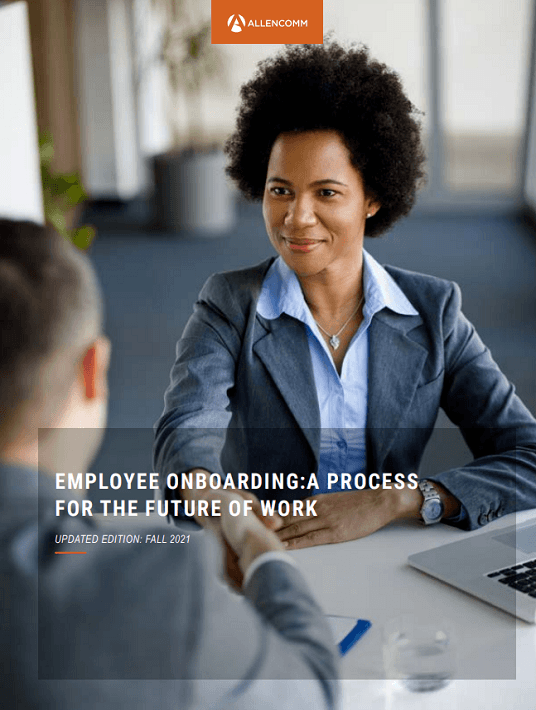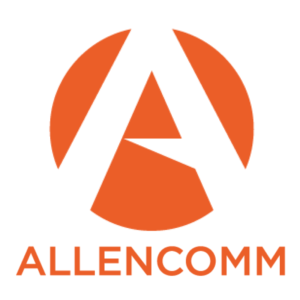Reasons To Invest In Employee Onboarding
The Brandon Hall Group found that strong onboarding not only improves retention by 82% but improves productivity by 70%. In addition to these challenges, workforce demographics are changing – and learning styles change accordingly. The benefits of well-designed onboarding are obvious, but what happens to our design strategy when workplace technologies and processes quickly change? Arguably, our onboarding practices must proactively change to keep pace.
Employee onboarding is an ever-evolving process that doesn’t have a specific cut-and-dry formula. Despite these challenges, one thing is clear: a careful design strategy is integral to getting new hires up to speed and fostering knowledge and confidence in the modern workplace.

6 Key Employee Onboarding Benefits
The right kind of training can lead to success, so it’s important to embrace new onboarding and training techniques from the very beginning to ensure employee engagement. Social learning, even accomplished remotely, and other techniques for employee engagement can increase accessibility to information within a team. For example, a salesperson might send helpful demo videos or a presentation to their team through their training content platform.
Here are six key benefits of effective onboarding for employee engagement:
1. Employee Satisfaction
Good training doesn’t result in employees shaking their heads and wondering what the point was. Before you produce a new course, discover your learners’ needs. Designing your course around this kind of analysis lets you focus on developing relevant skills without unnecessary information. In turn, employees will see improvements to their ability to work. They won’t see training as a timewaster, and they will walk away feeling much more satisfied.
2. Reduced Turnover
LinkedIn’s 2021 Workforce Learning Report found that 70% of managers say direct reports that spend more time learning are more satisfied on the job. An international study of food service employees also found a significant relationship between providing effective training and reducing turnover. Employees become happier and more productive rather than looking for a new job as soon as they get the professional development they need. Knowing how to do your job is a great feeling. So, as job satisfaction improves and motivation increases, employees will feel like staying.
3. Increased Performance
Your employees want training tailored to the tasks they do every day, not a generic, one-size-fits-all course. If you want to see performance improve, then your training design will have to target the knowledge base, motivations, skills, and competencies that are critical to individual positions. You can accomplish this by building personalized learning paths, but effective personalization has a few requirements:
- Training goals and objectives are role-specific
- Content targets well-defined knowledge and performance gaps
- LMS/Learning portal technology enables complex learner paths
4. Increased Knowledge Retention
People lose around 90% of what they learn by the time they get back to work, and unfortunately, many employee onboarding training courses don’t take this into account. Developing your employees’ skills isn’t a one-and-done activity. Employees should repeat key parts of the training at regular intervals to keep their knowledge sharp. By engaging learners during training, you can prevent their new expertise from decaying. To help them retain what they’ve learned, you need to make the training relevant, review content regularly, and provide opportunities to apply their knowledge and critical thinking skills.
5. Acquiring Fresh Talent
This may come as a surprise, but when you focus on developing your employees’ skills and knowledge base, word gets around. You’ll find people clamoring for a position at your company. The potential for professional growth is key to finding and keeping talented new personnel. Millennials care quite a bit about opportunities to learn and grow. A report by Gallup found that 59% of Millennials assign the most importance to training when applying for jobs, compared to 44% for Gen X and 41% for baby boomers. According to LinkedIn, in 2021, 69% of Gen Z reported making more time to learn skills. So, whether or not it’s intentional, training will become a key part of your company’s recruitment strategy.
6. Keeping Pace with Changing Technology
The growth of new technology-enabled business processes was unprecedented but is quickly becoming the norm. Companies are adopting these new processes just as quickly as they are being created. Countless studies show the half-life of skills is decreasing, and reskilling is a top priority. Right now data analysis, security, and digital marketing are all ranking high on the skills wish list of organizations across industries. Chances are your employees are going to need to be trained on some new tech-driven processes soon. Maintaining a dynamic onboarding program will go a long way to prevent future performance gaps in your workforce.
Conclusion
Download the eBook Employee Onboarding: A Process For The Future Of Work to launch a top-notch new hire training program that's engaging, inspiring, and employee-centered. You can also join the webinar to learn what it takes to improve your teammates' capabilities and build crucial skills.
References:
- The True Cost of a Bad Hire
- EMPLOYEE ONBOARDING THAT FOCUSES ON PEOPLE
- ResearchGate
- 2021 Workplace Learning Report
- How Millennials Want to Work and Live
- INFORMATION NOT STICKING? FIGHT THE FORGETTING CURVE.
- Millennial-Speak: How To Attract New Talent To Your Company










